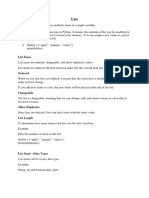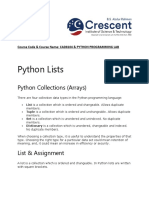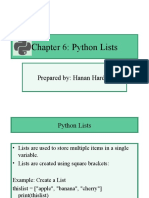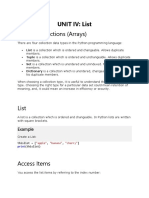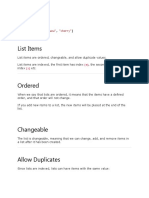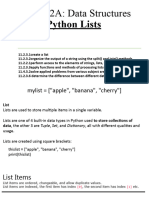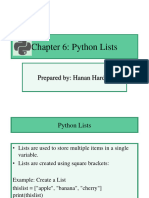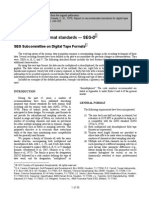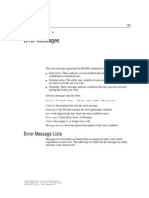0% found this document useful (0 votes)
5 views6 pages3.data Types
The document outlines various data types in Python, including text, numeric, sequence, mapping, set, boolean, and binary types. It provides detailed information on lists, including how to create, access, modify, and sort them, as well as methods for appending, inserting, and removing items. Additionally, it explains how to join multiple lists together.
Uploaded by
pra605039Copyright
© © All Rights Reserved
We take content rights seriously. If you suspect this is your content, claim it here.
Available Formats
Download as DOCX, PDF, TXT or read online on Scribd
0% found this document useful (0 votes)
5 views6 pages3.data Types
The document outlines various data types in Python, including text, numeric, sequence, mapping, set, boolean, and binary types. It provides detailed information on lists, including how to create, access, modify, and sort them, as well as methods for appending, inserting, and removing items. Additionally, it explains how to join multiple lists together.
Uploaded by
pra605039Copyright
© © All Rights Reserved
We take content rights seriously. If you suspect this is your content, claim it here.
Available Formats
Download as DOCX, PDF, TXT or read online on Scribd
/ 6












